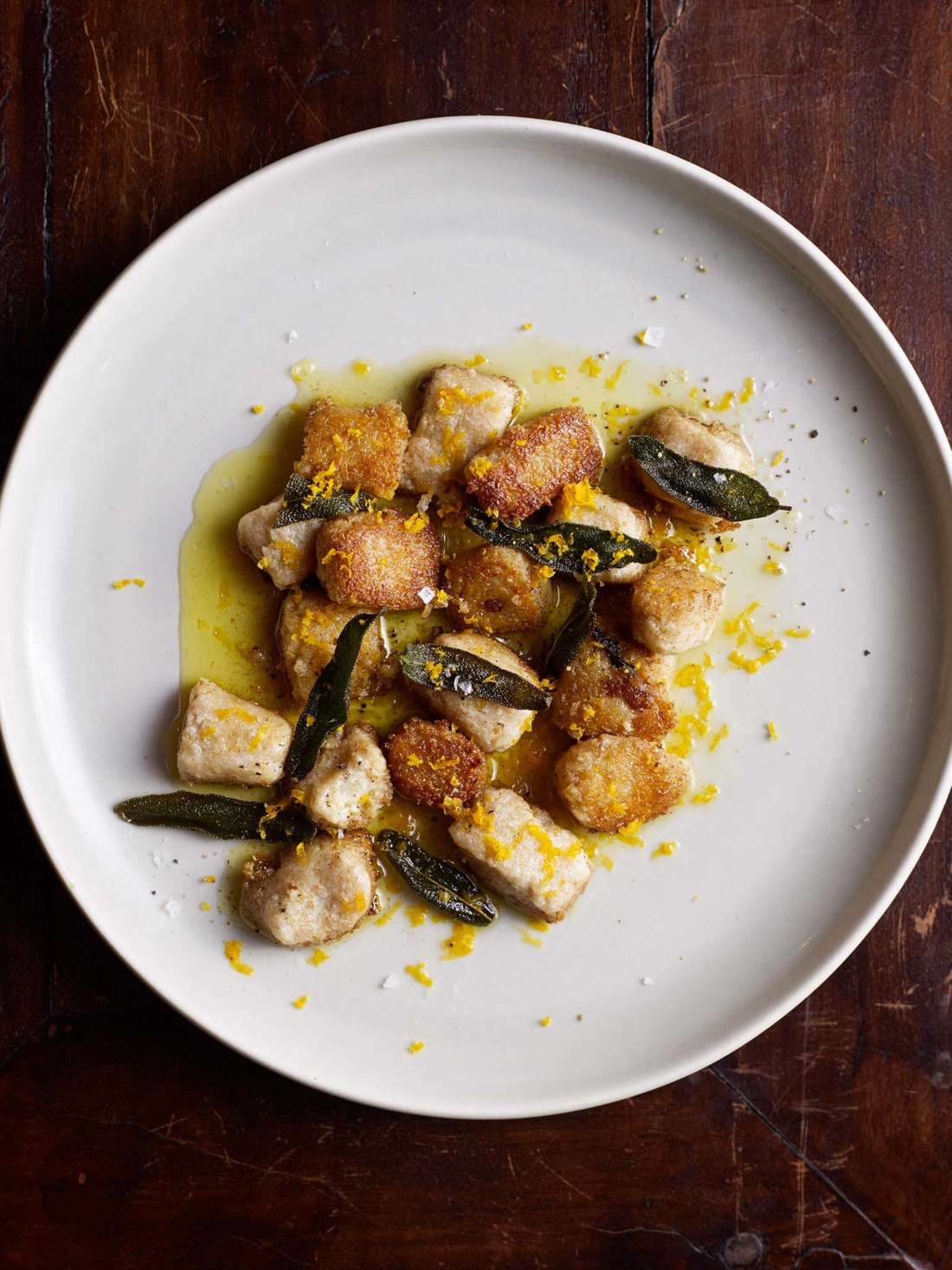Category — Features

The Next Meal – ricotta gnocchi with cured egg yolks
Gnocchi is a blank, cushiony canvas for you to paint with whatever flavours and textures your palate pleases. Although in fairness, this gnocchi here isn’t entirely blank.
Gnocchi is a blank, cushiony canvas for you to paint with whatever flavours and textures your palate pleases. Although in fairness, this gnocchi here isn’t entirely blank.
For the ricotta, we’ve used organic buffalo milk from Whangaripo and for the flour, organic, stoneground, wholegrain spelt grown by Milmore Downs in Canterbury – one of the many benefits of being friends with a baker. You could use almost any flour though, each giving you a different taste and texture. We’ve tried different types of white, rye, and spelt – all delicious.
The process of curing egg yolks is both fascinating and beautiful. The end product is like a soft, sweet parmesan dying to be grated over pasta, vegetables or pizza. You can manipulate the flavour of the yolk by adding things to your curing mix, like toasted and ground spices or dried mushrooms, for example.
For the ricotta
2 litres whole buffalo or cow milk
1 teaspoon salt
⅓ cup white vinegar
Bring the milk and salt to a boil, stirring constantly to prevent it from scorching on the bottom of the pot.
Once at a boil, remove from the heat, add the vinegar and stir. The addition of the acidic vinegar will cause the curds to separate from the whey.
Let the curds sit in the whey for 20 minutes before straining through a muslin, sieve or clean kitchen cloth. The longer you let it strain, the dryer and more crumbly it will be. Make sure you taste it as soon as it’s in the strainer – there’s nothing better than warm, fresh ricotta.
Set the whey aside and add it to the next loaf of bread you make instead of water, or make whey caramel with it – Cornersmith has a great recipe.
For the gnocchi
500g ricotta
1 tablespoon sea salt
100g parmesan, grated
zest of 1 lemon
150g wholegrain spelt flour
Put the ricotta, salt, parmesan and lemon zest in a food processor and blend until smooth. Scoop into a bowl and fold through the flour until just combined. Place the mixture out onto a floured surface and cut into quarters. Using your hands, roll each quarter into a long, thin log, about 1.5cm thick. You may need to add a sprinkle of extra flour to stop stickiness. Cut 2cm pieces off each log. Place on baking paper until you’re ready to boil.
Bring a large pot of salted water to the boil. Drop in the gnocchi pieces and cook for 40-50 seconds, or until they start bobbing to the surface. As the gnocchi rise to the surface, remove them with a slotted spoon and place on a large dish.
You can incorporate them with your desired accompaniment now, or give them a little colour in a hot, oiled pan.
Cured egg yolks
We haven’t been given ingredient quantities because it really doesn’t matter, as long as the yolks are covered. We use 70 per cent salt and 30 per cent sugar, but if you want a slightly more or less sweet result, tweak to your taste after trialling the 70/30 ratio.
Mix the salt and sugar.
Make a bed of the mixture in a container. Carefully add egg yolks and cover them completely with the salt and sugar mixture.
Cover and leave in a cool, dry place for at least 7 days. Check if they’re ready by giving them a squeeze between two fingers – they should feel solid, without too much give. If they aren’t, cover them back up for a few more days with some fresh salt and sugar mix.
As for turning this gnocchi into a dish, we’ve kept things pretty simple so the gnocchi – particularly the flour we used in it – gets a shot in the limelight.
We opted for the classic combo of browned butter and sage, with a generous squeeze of lemon. We also took the gnocchi straight from the water into a hot pan with olive oil to give it a little colour and texture.
To brown the butter, heat as much or as little as you’d like until small bubbles start to rise from the surface of the pot. The best indicator of when it’s ready is your nose – once it starts smelling intensely nutty, your butter is doing what it’s meant to.
For the sage, heat some oil and butter in a pan over medium to high heat. Add your sage and watch for it to shrivel slightly and change colour. Take it out and place on a paper towel to drain.